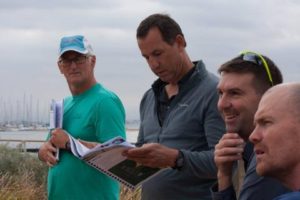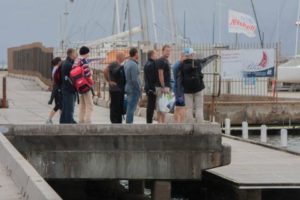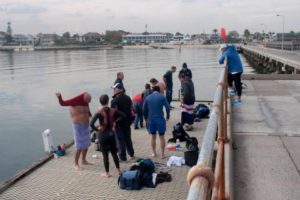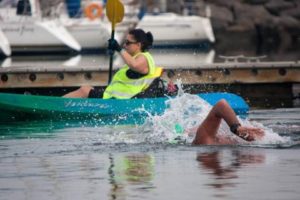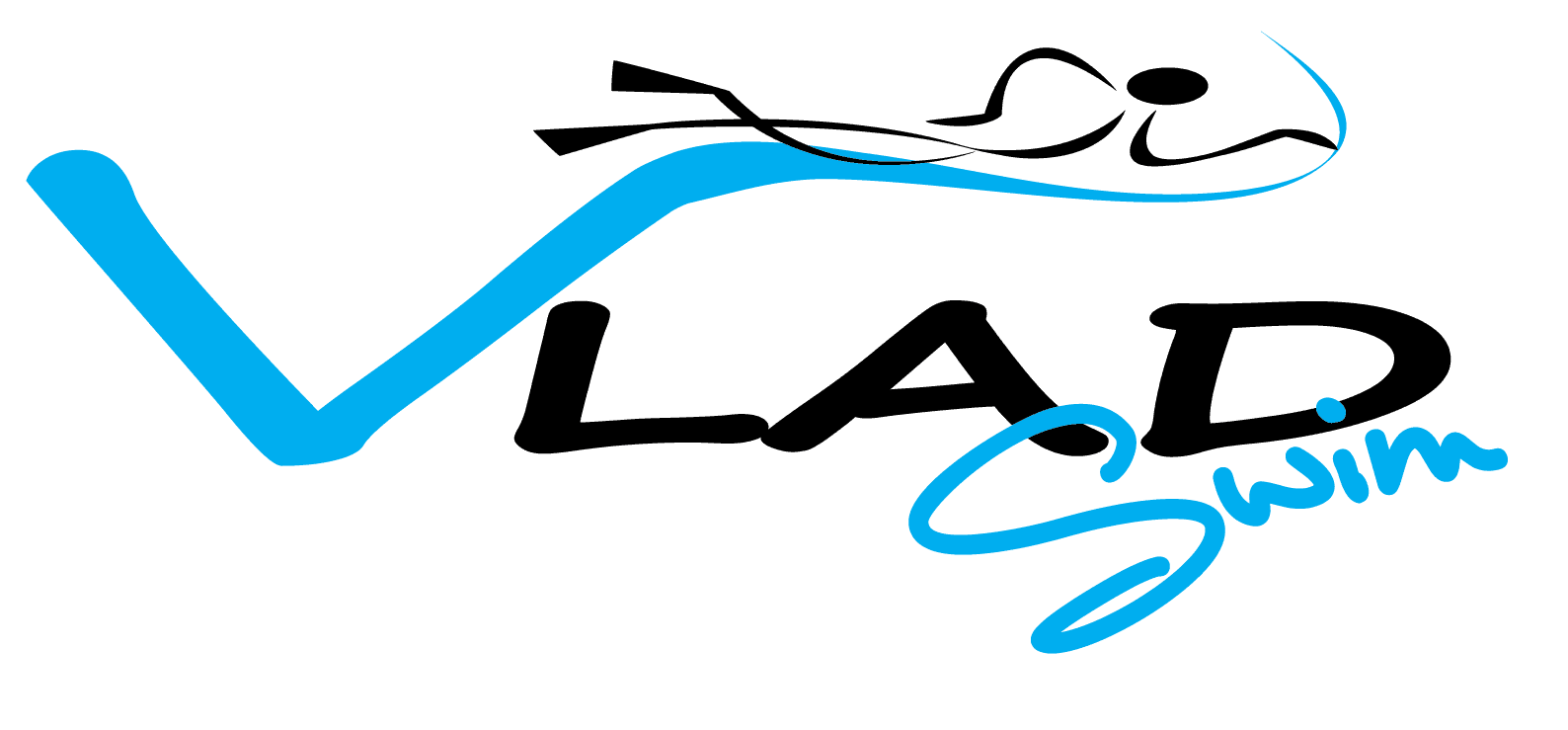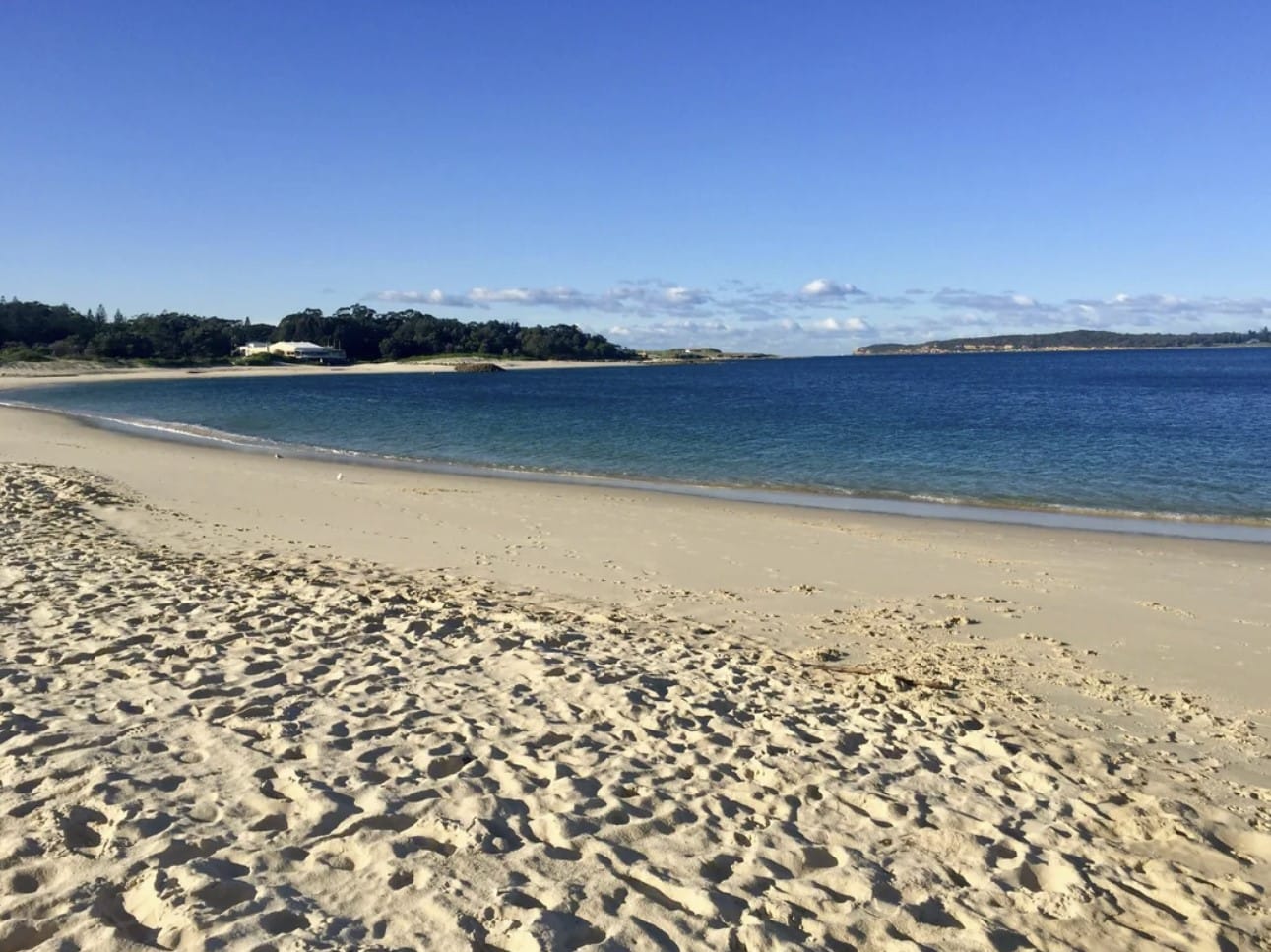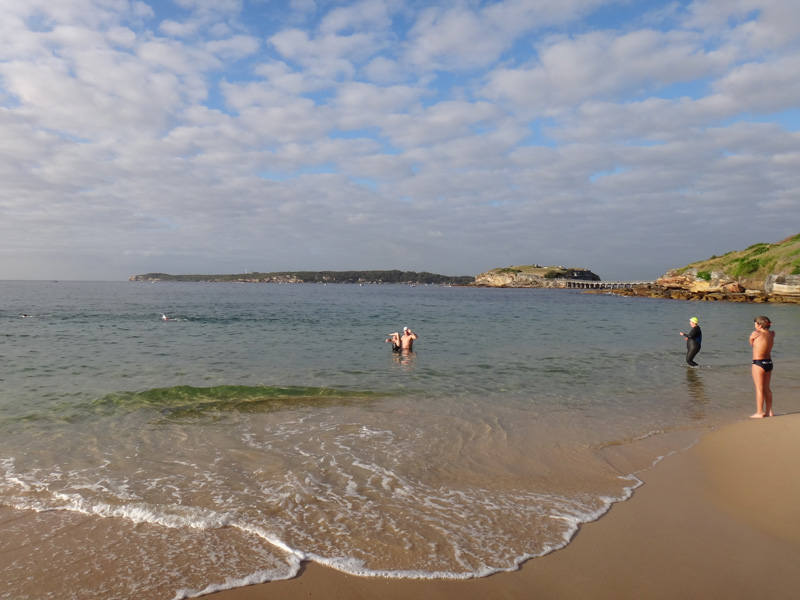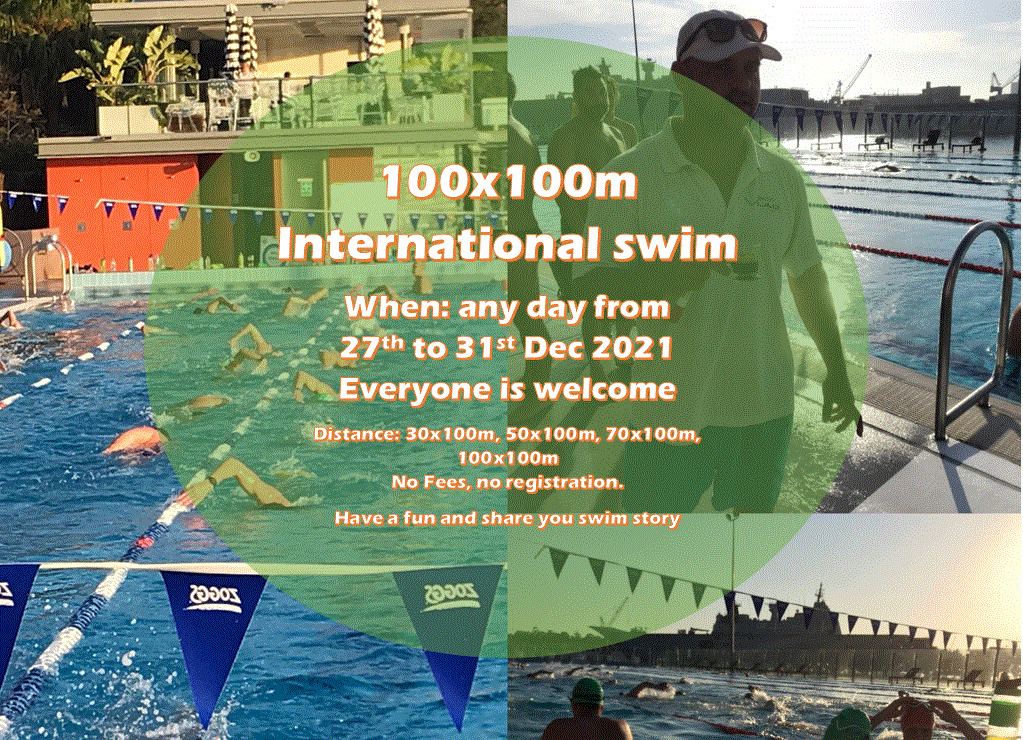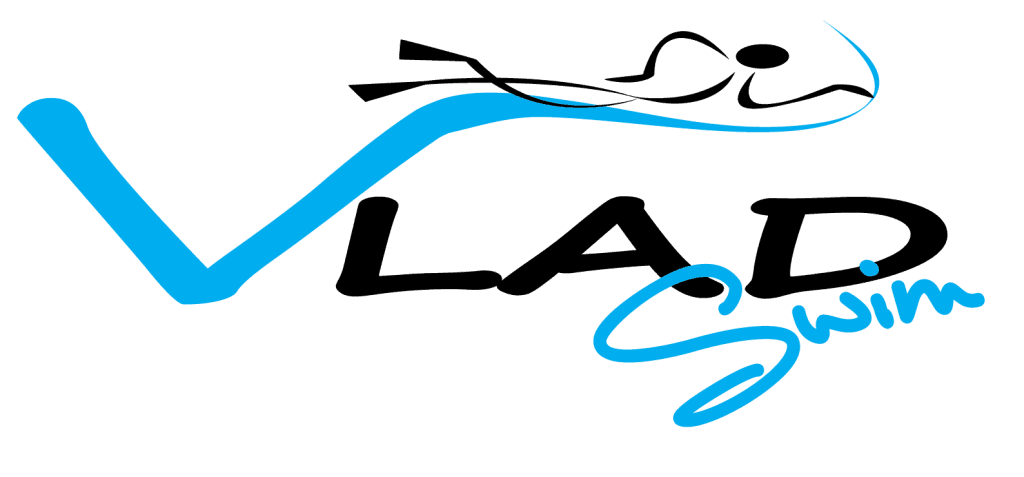Swim one
Vladswim’s fourth annual ‘cold camp’ trip to Brighton, Victoria kicked off on the afternoon of Thursday 23 April with a brief introduction followed shortly by a 90 minute swim. The cold water swimming camp is aimed at distance swimmers preparing for extreme marathons, such as the English Channel crossing, Catalina Island and the North Channel swim. The aim of this camp is to let swimmers experience and acclimatise to the cold water, with temperatures ranging from 13 to 16 degrees Celsius.
Vladswim Cold Water Camp 2015
Swim one
Vladswim’s fourth annual ‘cold camp’ trip to Brighton, Victoria kicked off on the afternoon of Thursday 23 April with a brief introduction followed shortly by a 90 minute swim. The cold water swimming camp is aimed at distance swimmers preparing for extreme marathons, such as the English Channel crossing, Catalina Island and the North Channel swim. The aim of this camp is to let swimmers experience and acclimatise to the cold water, with temperatures ranging from 13 to 16 degrees Celsius.
Dean, Des, Kane and Marty. Photo by Courtney Taylor

This first swim was a short 90 minute introductory swim, getting swimmers used to the cold water, and getting their coaches and supporters to watch their body positions and their reactions in the cold water. The swim was an easy and casual one, encouraging swimmers to focus on their breathing and get used to their new 16C environment.
“The goal is to stay in the water as long as you can,” explained Vladimir Mravec, coach and owner of Vladswim squad.
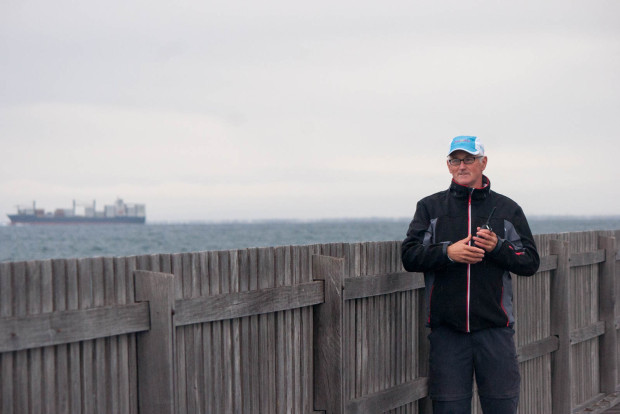
Lawrence Stubbs. Photo by Courtney Taylor
Vlad used this first swim to gauge the swimmers stroke rate and technique. After each swim, there is a briefing for coaches to check in with the swimmers, learn their weaknesses and see discuss what they need to fix. “Always, we are learning from the swims,” Vlad said.

Dean Summers. Photo by Courtney Taylor
On a previous camp, a swimmer, Racheal, only managed two out of three hours on a swim before suffering from hypothermia. With nothing different, except for a change in thinking, she dove in the next day and completed an eight hour swim in the cold water.
Vlad was joined this year, by Lawrence Stubbs, who previously worked as a Commander in the Royal Australian Navy and now owner of Thirroul Swim Adventure a squad for swimmers in the Illawarra region.
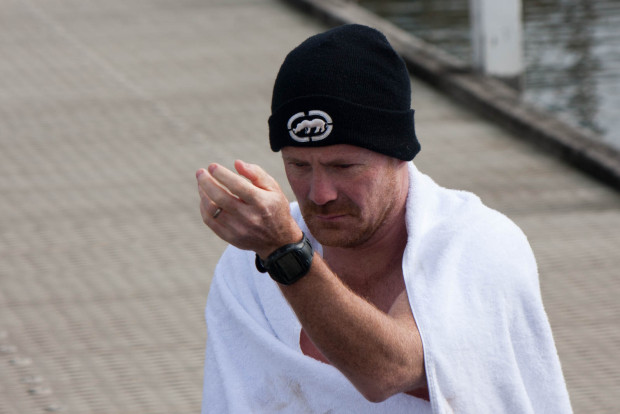
Des Mulcahy. Photo by Courtney Taylor
Lawrence briefed the group on one of the more important discussion points at this first meeting was safety. “Some of you are very likely to experience hypothermia,” he said. Lawrence participated in cold camp the previous year and suffered from it himself. Despite this set back, he still went on to complete the English Channel later that year.
The swimmers who joined the camp this year were:
Dean Summers- An MUA seafarer who will be swimming the English Channel in August to raise money for Hunterlink- a charity focused on the mental health of seafarers
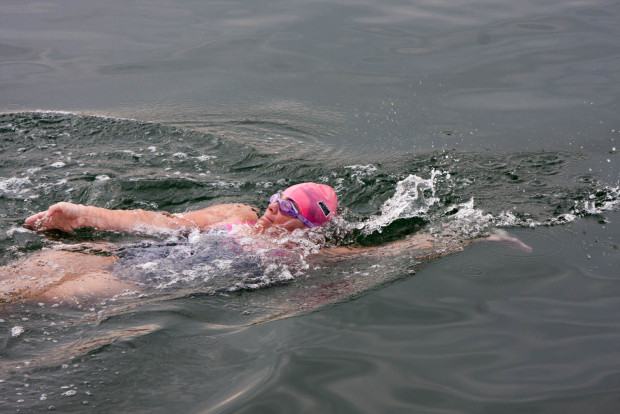
Tori Gorman. Photo by Courtney Taylor
Des Mulcahy – A Secretary – General Manager at Tattersalls Club who will also be swimming the English Channel this year.

Marty Filipowski. Photo by Courtney Taylor
Tori Gorman – A Program Manager at Apple who already has 21 marathon swims under her belt, including the English Channel and Manhattan Island. This year she will take on Catalina, of the coast of California.
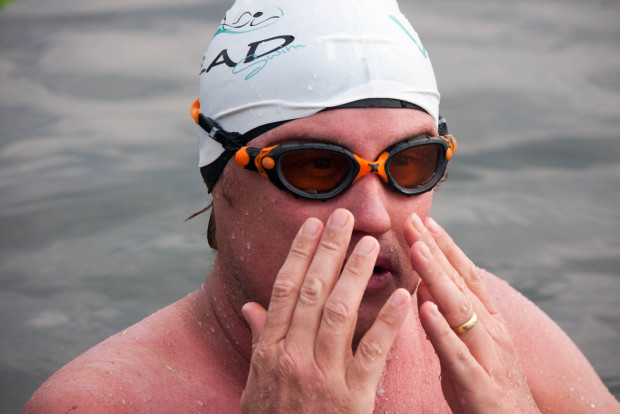
Kane Orr. Photo by Courtney Taylor
Marty Filipowski – A Director of Corporate Communications at Dell who is another seasoned extreme marathon swimmer, having also completed the English Channel and will be swimming Catalina this August.
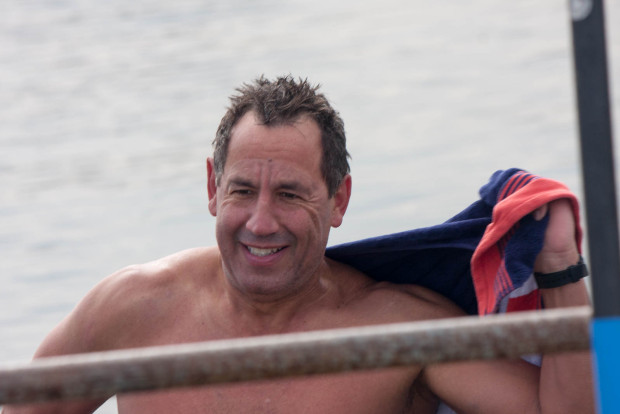
Andrew Stewart. Photo by Courtney Taylor
Kane Orr – A Project Analyst at Geoscience Australia. Kane is the first person from Canberra to qualify for the English Channel swim.
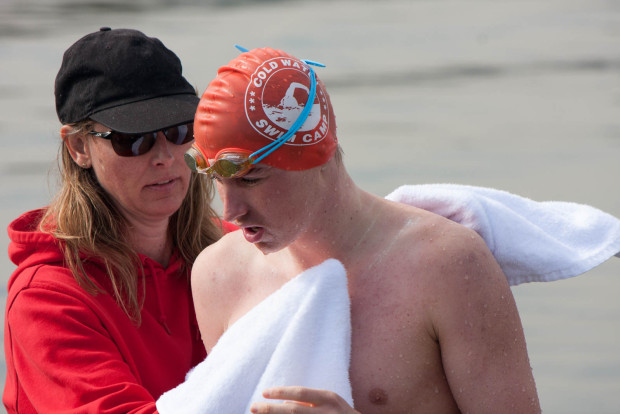
Ben Freeman and his mother, Jane. Photo by Courtney Taylor
Andrew Stewart – A Real Estate Agent at McGrath who will be the third of Vlad’s group swimming the English Channel. His swim will be raising money for Black Dog.

Diving in. Photo by Courtney Taylor
Benjamin Freeman – A 17-year-old from Canberra, in the middle of completing year 12 at school, who after only signing up in December last year, will be tackling the English Channel this August. He will have a taste of the Channel beforehand, being a part of a relay team of six that make their way across the channel, one hour at a time.
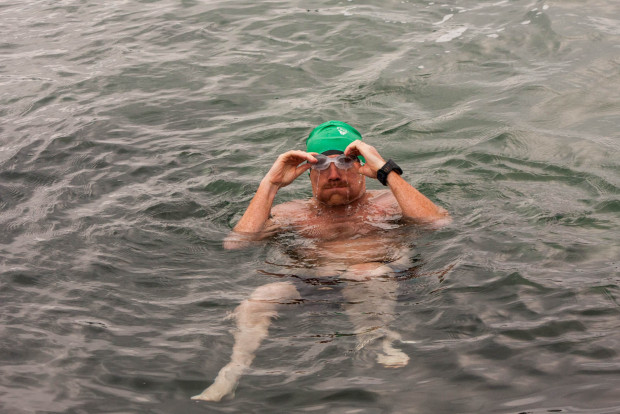
Des Mulcahy. Photo by Courtney Taylor
As the temperature cooled, and the wind picked up, the group of swimmers shed their beanies and coats and dove into the water, screaming a few obscenities on impact.
“When you first jump into the cold water, your body experiences shock,” Lawrence explained. “Your breathing is shallow but you can yell under water to relax the lungs.”

Photo by Courtney Taylor
The swimmers had to prepare in advance for the cold water. Their acclimatisation started around three weeks before they even stepped foot on the beach in Brighton. This included showering in cold water each morning and evening, having cold water baths with ice, avoiding warm places or wearing heavy clothing, and mentally ridding their mind of the word ‘cold’.
This last part is especially important for supporters as well. “The word ‘cold’ is no longer part of your vocabulary,” Vlad said. “If the swimmer hearts it, they will get cold, even if they are in 28 degree water.” One of his tips for supporters is to keep their outer layer of clothing the same, so that the swimmer won’t be able to see if extra layers have been added. “Of they see you rug up more, they will automatically think, ‘it’s getting cold,’ and then they will get it into their head that they are cold.”
Swim two: Night Swim
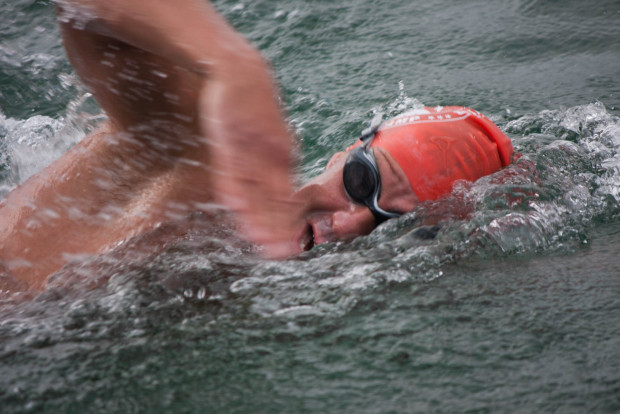
Andrew Stewart. Photo by Courtney Taylor
With only an hour between swims, the group had just enough time to dry themselves, have a warm drink, and shiver from the cold, before heading back out to do it again. This time for only an hour. In the dark.
The wind had died down, but the water was still cold, if the screeches and “Brrrr!’s” were anything to go by. The Middle Brighton pier still had fishermen with several rods each, lining up along the pier. Lit up with nothing more than a couple of glow sticks each, it wasn’t uncommon for swimmers to bump into each other or drift. “You’re way off course,” Marty yelled out to his swim partner, Tori, a shadowy body only discernible by the orange glow stick sticking out of her goggles.
The swim turned out to be quite peaceful despite a few moments of swimmers nearly knocking heads with each other and Tori woman nearly losing a contact lens. The swimmers all commented on how peaceful the water was.
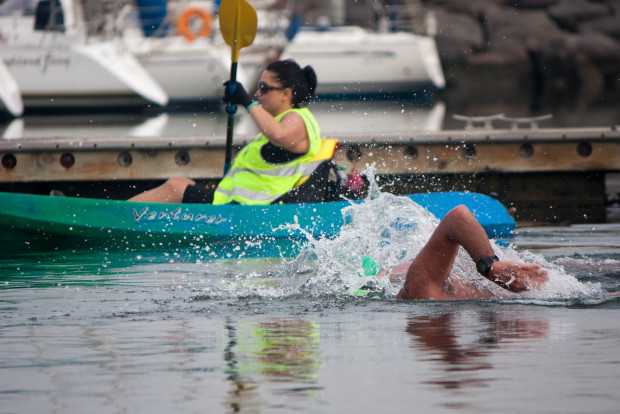
Dean’s daughter, Michelle Summers. Photo by Courtney Taylor
“It’s cold for the first minute you get in, but then your core temperature normalises and from then it’s alright,” Kane said. “Getting out is the worst bit. By the time I walk to the crossing, I’ll be shivering.”
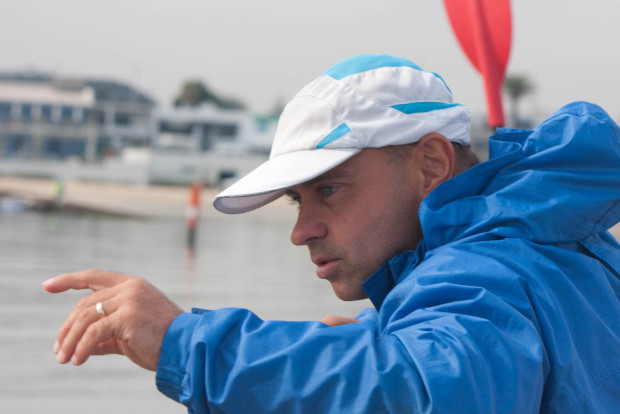
Coach Vladimir Mravec. Photo by Courtney Taylor
It wasn’t until breakfast the next morning that it was revealed that not every swimmer had such an enjoyable time. “Everyone said it was so relaxing and enjoyable, I was just cold!” Andrew confessed.
Swim three
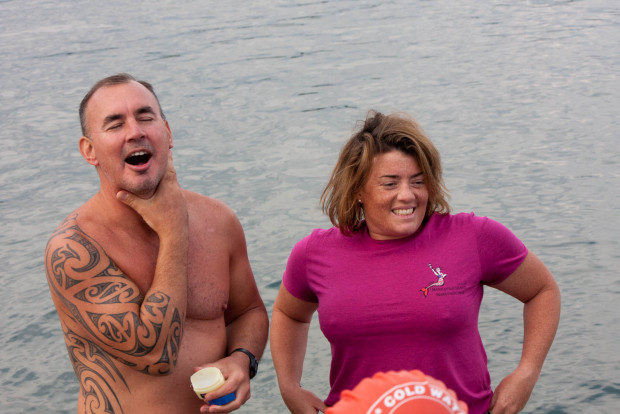
Marty and Tori. Photo by Courtney Taylor
Conditions were pristine for the third swim of the camp. This time the swim lasted for three hours, getting the swimmers used to staying in the colder water for a longer period of time. It also gave them a chance to practice the course for the 8 hour swim the next day, as well as finalise their feeding strategy with swimmer feeds lasting around 20 seconds and ranging from every 20 to 45 minutes.
This swim involved leaving the comfort of Brighton’s Marina and venturing into choppier and rougher waters, but the wind held off, the water was nearly still and the sun peeked out from the clouds to keep the supporters warm.
Coach Vlad, and Dean’s daughter, Michelle, each paddled a kayak to guide the swimmers and provide them with support.
One of the most important aspects of a cold water swim is keeping up a reasonable pace. If you swim too fast to avoid the cold, you will tire yourself out. If you swim too slow, you run the risk of hypothermia. “The Channel swim is unlimited time,” Vlad said. “Two hours can feel like six hours or six hours can feel like two.”
“Smile, accept it, and be prepared to be there as long as you need to be.”
After an average of two years of training for the English Channel, it is not about fitness. By that stage the swimmers will already be as fit as they need to be. The challenge from this stage is a mental one. “If you think about hypothermia, you can drive your body towards it, spiral into it,” Vlad said.
After the swim, the group sat down to debrief. “It was cold,” Dean said, “I felt cold, but I didn’t mind it.” For Dean though, it felt a lot longer than three hours. Marty and Tori, both seasoned extreme marathon swimmers who have been on several cold camps previously, they have learned to embrace the cold, focus on their breathing and not let it bother them.
Swim five
While the fourth swim was just a short one hour swim the night before, the fifth swim took place on Saturday 25 April, Anzac Day. Waking up before the sun, and with a blanket of clouds overhead, the group trudged down to Brighton Baths Health Club where they joined local swim club, The Icebergers for an eight hour swim. Swimming for at least six hours on this swim is a qualifier for the English Channel.
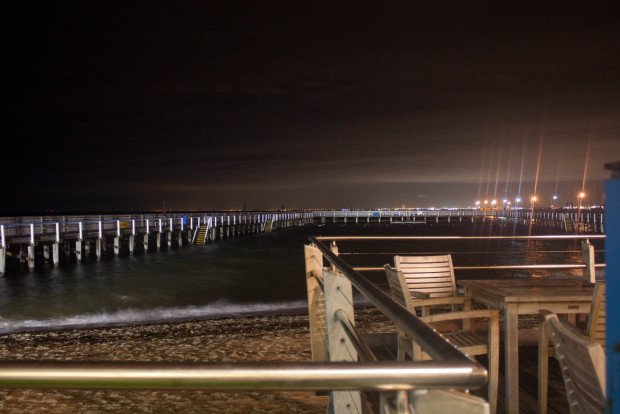
Marina at Brighton Baths Health Club. Photo by Courtney Tayor
This event highlighted the importance of mental strength. The conditions were similar to the day before, but for each swimmer the experience was different. Despite struggling on the three hour swim the day before, Dean felt great during this longer event. “Can I swim the Channel now,” he asked after the swim. He smiled most of the way through. “I could’ve easily done another 5 or 6 hours,” he said, “I feel confident.
Des started off quite rattled, as he found that he had the wrong swimming apparel on, meaning he would not be able to use this swim as a qualifier for the Channel. “The first lap was incredibly awful. I wasn’t cold, but not knowing where I was going, there was a lot of uncertainty. I felt disoriented.” During the swim, he struggled with boredom but the group helped to support each other. “It was great having Dean there on the last lap. It took a lot of strength to get there and do that last one, but he psyched me up.”
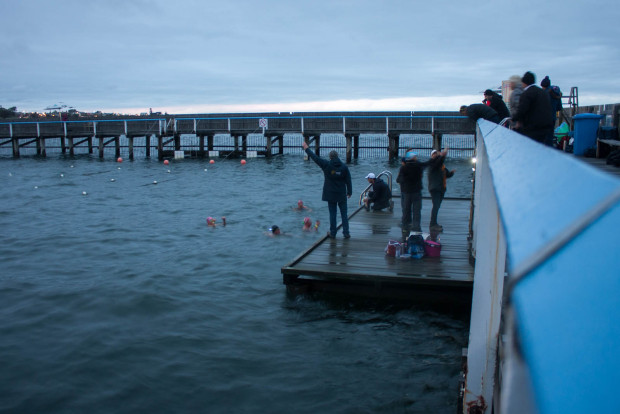
Feeding from the dock. Photo by Courtney Taylor
Ben, the 17-year-old from Canberra, broke the swim up into two hour increments. “Two hours ticked, four hours ticked. After four, I was just focusing on six hours,” he said. “I got to six hours and mentally, I was just done.”
“I didn’t realise how big of a toll counting down the hours would be,” he admitted. Having been a competitive racer throughout his entire swim career, Ben needs to get used to setting a good pace and not setting goals if he wants to complete the Channel.
Not all of the swimmers fared well. Andrew struggled with the cold. He struggled with fatigue and felt lethargic. His stroke rate decreased below 50 strokes a minute, meaning his body couldn’t generate enough heat. He struggled to communicate and slurred his words. Andrew experienced hypothermia. Although he didn’t realise it himself, his support team noticed the signs. “We tried to keep you in as long as we could, we called in a couple of others to observe you. But we had to call it,” they said.
The debriefing after this longer event was an emotional one for Thirroul Swim Adventures coach, Lawrence. “You were all so different, but so tenacious,” he said. “Andrew went to hell today. He doesn’t realise how close he was to Lucifer.”
“Being there, seeing you every hour, seeing you adapt, change, come to terms with what you had in front of you, just getting the job done, being there with you all was very special.”
Never known for being a man who goes easy on his team, Vlad had the group back in the water just a few hours later. This time, there were no laps to swim, and it was more about just getting back into the cold water again.
Swim seven
The final swim was a short one lap race at 8am on the last morning, against The Icebergers. The group of 28 were, “comprehensively flogged by Ben,” an Iceberger admitted.
The camp ended with breakfast at the Royal Brighton Yacht Club where swimmers swapped tips and talked about their own experiences.
Cold camp is not just about swimming and then going home, Vlad said. “It’s about learning. It’s about knowing what you don’t like doing, and doing it. It’s about finding your weaknesses and working on them. It provides an ability to share ideas and discuss strengths and weaknesses. It promotes a sense of achievement and camaraderie that is necessary for a swimmer to achieve enormous goals.”
